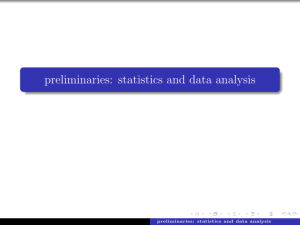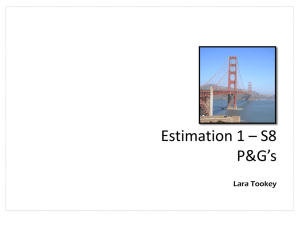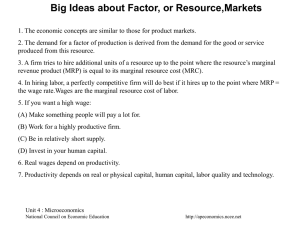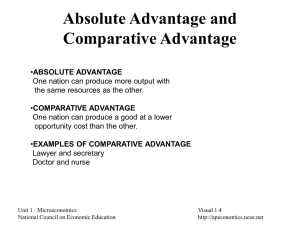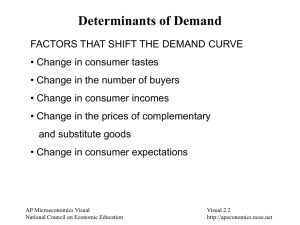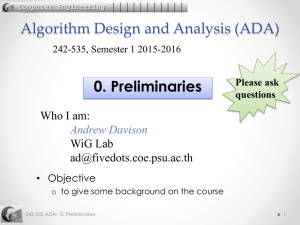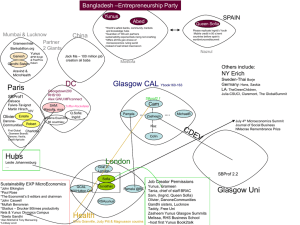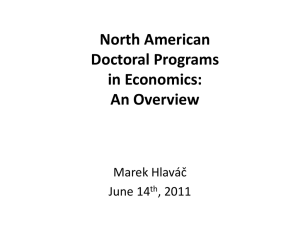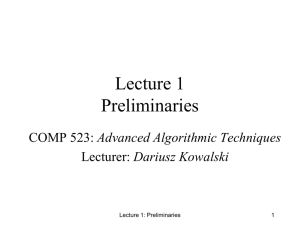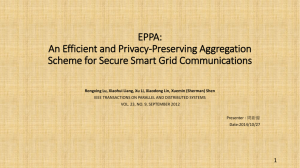Chapter 1
advertisement
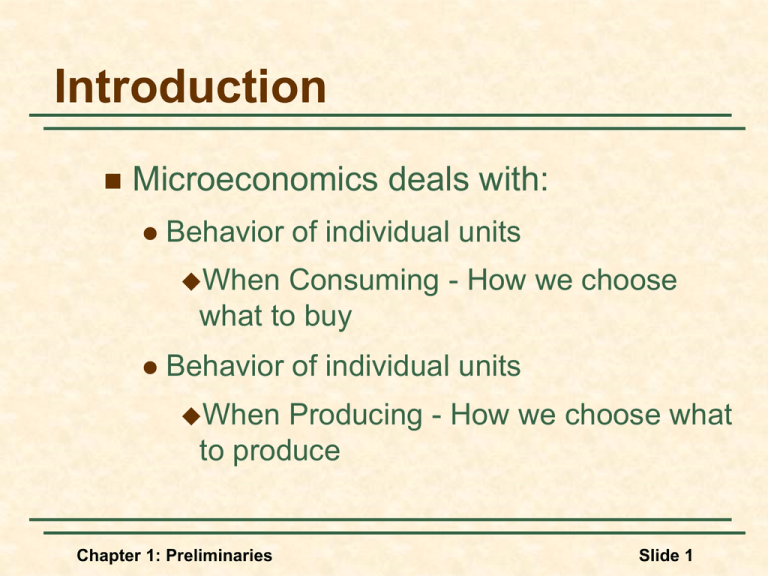
Introduction Microeconomics deals with: Behavior of individual units When Consuming - How we choose what to buy Behavior of individual units When Producing - How we choose what to produce Chapter 1: Preliminaries Slide 1 The Themes of Microeconomics Microeconomics Allocation of Scarce (limited) Resources and Trade-offs in a market economy Microeconomics and Optimal Trade-offs 1. Consumer Theory 2. Workers 3. Theory of the Firm Microeconomics and Prices The role of prices in a market economy How prices are determined Chapter 1: Preliminaries Slide 2 Theories and Models Microeconomic Analysis Theories are used to explain observed phenomena in terms of a set of basic rules and assumptions. For example The Theory of the Firm The Theory of Consumer Behavior Chapter 1: Preliminaries Slide 3 Theories and Models Microeconomic Analysis Models: a mathematical representation of a theory used to make a prediction. Validating a Theory: determined by its predictive quality, given the assumptions. Evolving the Theory: testing and refining theories is central to the development of the science of economics. Chapter 1: Preliminaries Slide 4 Positive Versus Normative Analysis Positive Analysis Positive analysis is the use of theories and models to predict the impact of a choice. For example: What will be the impact of an import quota on foreign cars? What will be the impact of an increase in the gasoline excise tax? Chapter 1: Preliminaries Slide 5 Positive versus Normative Analysis Normative Analysis Normative analysis addresses issues from the perspective of “What ought to be?” For example: Consider the equity and efficiency trade-off of an increase in the gasoline excise tax versus import restriction on foreign oil. What Do You Think? What are the positive and normative issues of raising the minimum wage? Chapter 1: Preliminaries Slide 6 What is a Market? Markets Defining the Market An appropriately defined area where buyers and sellers interact to determine the price of a product or a set of products. The market parameters must be set before an analysis of the market can take place. Market Extent Defines the boundaries of the market • • Geographic Range of products Chapter 1: Preliminaries Slide 7 What is a Market? Geographic boundaries Range of Products Gasoline: US vs California Housing: Chicago vs a Chicago neighborhood Gasoline: regular, super, & diesel Cameras: SLR’s, point & shoot, digital Example - Markets for Prescription Drugs Well-defined markets - therapeutic drugs Ambiguous markets - painkillers Chapter 1: Preliminaries Slide 8 What is a Market? Competitive vs. Noncompetitive Markets Competitive Markets: Because of the large number of buyers and sellers, no individual buyer or seller can influence the price => ONE PRICE. Example: Most agricultural markets Noncompetitive Markets Markets where individual producers can influence the price => MANY PRICES. Example: OPEC Chapter 1: Preliminaries Slide 9 Why Study Microeconomics? Microeconomic concepts are used by everyone to assist them in making choices as consumers and producers. Two Examples: Ford and the development of its SUV’s Public Policy Design: Automobile emission standards for the 21st century Chapter 1: Preliminaries Slide 10 Why Study Microeconomics? Ford and the development of its SUV’s Questions Consumer acceptance and demand Production cost Pricing strategy Risk analysis Organizational decisions Government regulation Chapter 1: Preliminaries Slide 11 Why Study Microeconomics? Auto emission standards for the 21st century Questions Impact on consumers Impact on producers How to enforce the standards What are the benefits and costs? Chapter 1: Preliminaries Slide 12
